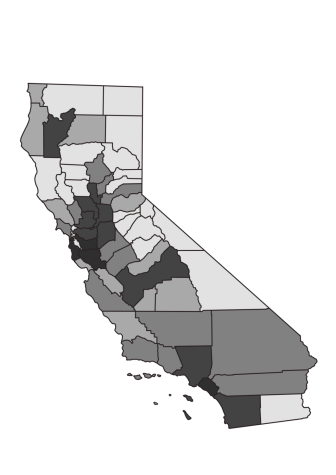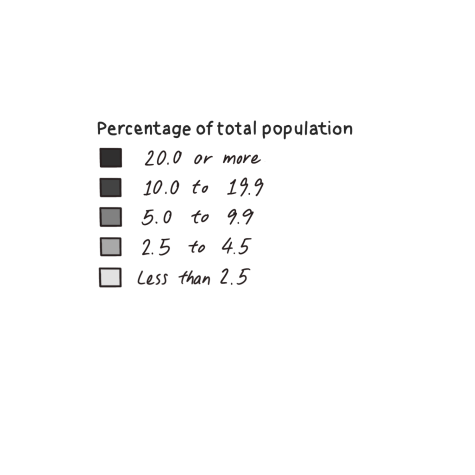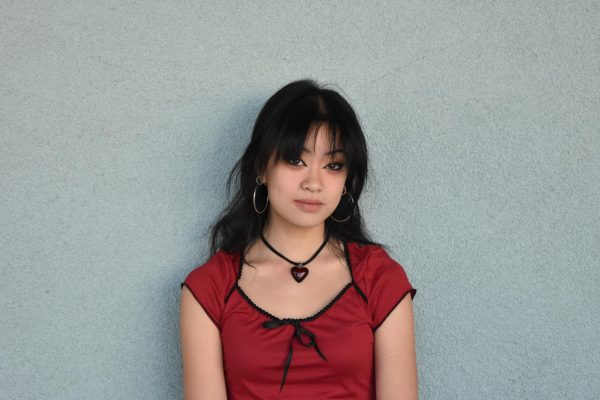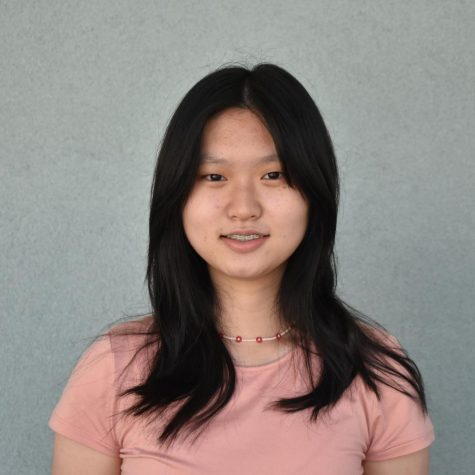Majority minority: Asian experiences in Bay Area comes with strong community, nuances
History
“To my mind it is clear, that the settlement among us of an inferior race is to be discouraged by every legitimate means. Asia, with her numberless millions, sends to our shores the dregs of her population.”
So said California Gov. Leland Stanford in his inaugural address on Jan. 10, 1862. Stanford’s negative perception of the Asian population, however, didn’t stop him from employing thousands of Chinese workers in his Central Pacific Railroad Company, profiting off of their labor. Stanford’s nativism and hypocrisy is simply one of many manifestations of anti-Asian discrimination in the 19th century, including legislation such as the Page Act of 1875 and the Chinese Exclusion Act of 1882. This attitude persisted into the 1900s: Franklin D. Roosevelt’s Executive Order 9066, for example, legalized the internment of Japanese American civilians during World War II, while U.S. servicemen mistreated Korean military brides after the Korean War.
Discrimination pervaded at a local level as well. According to “Palo Alto: A Centennial History,” a book published in 1993 by Ward Winslow and the Palo Alto Historical Association, certain land deeds in Palo Alto carried restrictions specifying that no persons of African, Japanese, Chinese or Mongolian descent were to use or occupy homes. However, the Asian population in the Bay Area persisted, from gold-miners in the 1850s to today’s engineers and computer scientists — or so the stereotype dictates. This community is continuously growing, providing a comfortable environment for new immigrants.
Assimilation and diversity
With its 46.2% Asian population, as per its 2022-23 school profile, Gunn boasts a welcoming space for Asian students. Freshman Doyoon Kim moved to Palo Alto from Seoul, South Korea, in middle school. Although she was born in San Diego, Kim moved to South Korea when she was 6 years old and had to reacclimate to American culture when she returned to California, a change made easier thanks to the deeply rooted Korean community in the Bay Area. “In a way, it’s been easier for me and my family to assimilate, since there’s a bigger Asian population and the culture here is integrated with Asian culture,” she said. “If I went to a different area with a lower Asian population, it definitely would’ve been harder for me to feel included.”
Junior Saara Doke, born and raised in the Bay, similarly finds it easier to maintain cultural practices and celebrations thanks to the large South Asian presence in the area. “There are so many places nearby in which there’s a large South Asian population, with all of these temples and places I can go for holidays,” she said. “My cousin lives in Texas and has nobody to communicate her culture with.”
Kim said that the emphasis on learning about and acknowledging diverse cultures in Palo Alto has also made her more comfortable in the local community. For example, Gunn’s annual Global Cultures Week included a multitude of events to foster interest in and teach about different languages and customs. “School life in general is really different because everybody at my Korean school is Korean and speaks Korean,” Kim said. “Here, there’s a lot of different nationalities. In the U.S., we focus a lot more on diversity than Koreans do.”
Sophomore Janus Tsen, who moved to California from Shanghai, China, in 2018, concurs that the importance the Bay Area places on inclusivity differentiates it from other places around the world. “Inclusivity and diversity are so emphasized here,” he said. “It’s a core tenet to be considered a good person.”
Microaggressions
Despite this emphasis on diversity, racism — specifically microaggressions or unconscious biases — still worms its way into Kim’s day-to-day life. “I sometimes hear people (use) slurs towards Asians,” she said. “People use (them) and don’t consider (them) to be as harsh as slurs towards Black and Hispanic people. A lot of people joke about Asian stereotypes, and sometimes it’s fine, but sometimes it’s like, ‘You’re still stereotyping Asian people in this community?’ and it’s uncomfortable.”
“It’s easier for us to assimilate because there are a lot more Asians in the Bay Area than other parts of the U.S. It’s a ‘safety in numbers’ thing — if there’s a lot more of you in a group, you feel safe. It’s easier for you to congregate and have safe communication.”
— Sophomore Janus Tsen
Doke agrees that the belief that Asians face less discrimination than other historically underrepresented groups and that slurs towards Asians aren’t as harmful is false. “A lot of people try to say that being Asian is kind of like being white, but Asian people still deal with so much discrimination that people (overlook),” she said.
What Doke refers to is known as the idea of a “proximity to whiteness,” where Asians are culturally “closer to white” than other racial minorities. While this stereotype seems to benefit the Asian community at first glance, its undertones promote disunity, suggesting that the Asian people are part of an oppressive majority and alienating them from other minorities. According to South Asian American psychotherapist Divya Kumar, many Asian Americans might be led to believe that proximity-to-whiteness is a safeguard against racism, when it isn’t.
While blatant racism toward Asians is less common in Palo Alto, other forms of harmful stereotypes exist, including that of the “perpetual foreigner.” It is a form of nativism in which some are regarded as foreigners because they belong to an ethnic or racial minority. This stereotype is often applied to those who are naturalized citizens, as well as those who have lived in the U.S. their entire lives or whose families have been in the U.S. for generations. “My (Asian) friends who are American, people ask them, ‘Where are you from?’” Kim said. “They were born and raised here. People still consider them foreigners even though they were raised American.”
“A lot of people try to say that being Asian is kind of like being white, but Asian people still deal with so much discrimination that people (overlook),”
— Junior Saara Doke
The perpetual foreigner stereotype is harmful for two reasons. First, it creates an us-versus-them mindset, dividing society into an “in-group” and an “out-group.” These groupings come with biases — there is a tendency to favor and support those who belong to the “in-group,” and dislike or belittle those in the “out-group,” whom one doesn’t identify with. Second, the perpetual- foreigner stereotype lumps all people of Asian descent into one large group, even though experiences vary significantly. “There’s communities within the bigger Asian community, and we all have different traditions and different cultures,” Kim said.
Students respond to microaggressions they encounter — including the perpetual-foreigner stereotype — in different ways. Some, like Tsen, simply try to forget racial slights. “We talked about microaggressions at some point in SELF, and I was trying then to think of times I’ve encountered them, but I couldn’t think of anything,” he said. “I think the reason for that is, even if people are being racist, I try not to be affected by it and forget it. It’s harmful to remember that people hate me for my race.”
The beauty standard
Doke’s struggles with her ethnicity largely stem from pressure to conform to Western beauty standards. “It’s something a lot of brown girls go through,” she said. “In middle school, I got made fun of for Indian traits like having thicker eyebrows. I was also really tan in middle school, and even other Indians would say, ‘At least I’m not as dark as Saara.’ The beauty standard is heavier on girls because there’s so much of an emphasis on beauty for girls. As you grow up, you get the idea enforced into your head that white equals beautiful.”
Doke noted that these standards continue to persist in many Asian communities. “Colorism is such a huge issue,” she said. “My grandma got me skin-bleaching (products) once, and my white friends were like, ‘What the hell.’”
Moving forward
Communities of peers that Asian people can relate to on a cultural level provide both comfort and support. Even though the Bay is ethnically diverse and aims to promote tolerance and inclusivity, racism, however unintentional, is still prevalent. Being a part of historically underrepresented group comes with a slew of nuances that can go unnoticed by some.
Students seem to agree that a community makes the burden more tolerable. “More conservative places don’t have as many Asian Americans, so it’s easier to hate on a minority,” Tsen said. “But here, Asians are part of the majority and so it’s harder to hate on a majority.”
Currently, it’s the pressure to assimilate that weighs heavily on many Asian Americans. Opportunities to communicate about their cultures and talk about the roles their racial identities have on their lives — both daily and cumulatively — is what will make the Bay truly diverse. Moving forward, an emphasis on “safe communication,” which Tsen describes as “when you can freely talk about your ideas with other people without being persecuted for it,” could be a beneficial next step in terms of racial integration and inclusion. “It’s a ‘safety in numbers’ thing—if there’s a lot more of you in a group, you feel safe,” he said. “It’s easier for you to congregate and have safe communication.”


Your donation will support the student journalists of Henry M. Gunn High School. Your contribution will allow us to purchase equipment and cover our annual website hosting costs.

Senior Becca Wu is an editor of In-Depth, The Oracle's newest section. Outside of staff, she enjoys dancing with the Gunn Titanettes and watching horrible...

Elise Hu is a sophomore and graphics freelancer who joined The Oracle in September, 2022. Outside of school, she likes to draw, listen to music and play...

